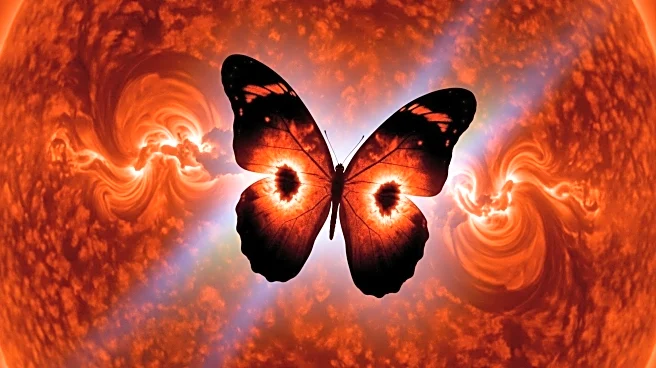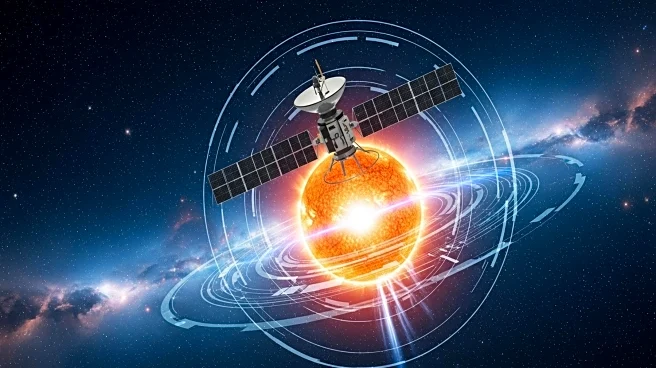What is the story about?
What's Happening?
A large coronal hole, shaped like a butterfly and over 35 times wider than Earth, has appeared on the sun. This phenomenon, observed by NASA's Solar Dynamics Observatory, is characterized by an opening in the sun's magnetic field, allowing streams of charged particles to escape into space. These particles can interact with Earth's magnetic field, potentially causing auroras in regions such as Alaska, parts of Canada, and possibly the northern United States. While the size of this coronal hole is significant, scientists note that such occurrences are not unusual.
Why It's Important?
The appearance of a coronal hole and the potential for auroras highlight the dynamic nature of solar activity and its impact on Earth. Auroras, while visually stunning, are also indicators of solar wind interactions with Earth's magnetosphere, which can affect satellite operations, GPS systems, and power grids. Understanding these solar phenomena is crucial for preparing and mitigating potential disruptions in technology and communication systems. Additionally, such events offer opportunities for scientific research and public engagement with space science.
What's Next?
As the coronal hole continues to face Earth, scientists and space weather agencies will monitor its effects on Earth's magnetic field. The potential auroras could attract interest from both the scientific community and the public, with increased attention on regions where the lights may be visible. Continued observation and research will help improve predictive models for solar activity and its terrestrial impacts.
AI Generated Content
Do you find this article useful?
















